The bright, tall and showy foxglove plant is a welcome guest on any garden plot. Everywhere this honey plant grows well with flowers similar to bells. The foxglove will feel great in the center of the flower garden in the sun and among the garden bushes in the backyard. The plant is very unpretentious in care, therefore it is very loved by gardeners. Growing from flower seeds does not present any particular difficulties, but it has its own characteristics.
Content
Description, varieties and photos of foxglove
The plant got its name due to the shape of flowers that look like thimbles. Its tall, erect peduncles are strewn with large flowers collected in pyramidal brushes. Red, purple, pink, cream, white flowers are strewn with dark spots. Foxglove petals bloom gradually... The plant blooms in June and blooms until autumn. The dull green bright leaves of the flower are oval in shape and deep veins.
When planning a flower garden or flower bed in your garden area, you need to decide on the required varieties, since they differ not only in color of flowers, but also in height. The following varieties are most often used in landscape design:
- Foxglove purple is known to almost all growers.... The bush is 1.2–2 m high and has a pubescent stem and leaves, racemose tall inflorescences and tubular-bell-shaped flowers. The petals can be apricot, cream, purple, lilac, pink, yellow, or white with dark purple spots. The corolla of the flower can be clean or covered with a net pattern on the inside. Flowering lasts about one and a half months.
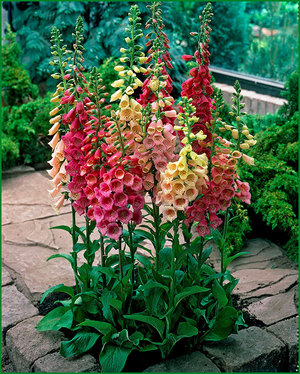 Variety "Tapsi" is a perennial plant with large elongated leaves of a gray shade and stems 40–80 cm high. Carpal inflorescences consist of 10–25 curved bell-shaped flowers of a pink-crimson hue. The plant is afraid of frost, so it requires shelter for the winter. Bloom begins in June.
Variety "Tapsi" is a perennial plant with large elongated leaves of a gray shade and stems 40–80 cm high. Carpal inflorescences consist of 10–25 curved bell-shaped flowers of a pink-crimson hue. The plant is afraid of frost, so it requires shelter for the winter. Bloom begins in June.- Large-flowered foxglove is a bush up to 120 cm high and above... The leaves, pubescent along the edges, have veins. Graceful drooping racemes-inflorescences consist of light yellow flowers with a diameter of 4-6 cm. Inside they are dotted with brown veins and spots, and outside they have a slight pubescence. Flowers blooming in June or July adorn the plant for more than a month.
- Variety "Merton" is a hybrid plant up to 80 cm high... Its stems are strewn with dark shiny leaves and swollen tubular flowers. They are distinguished by a speckled throat and strawberry-colored petals. The variety pleases with its flowering in May - June.
- Rusty foxglove is an ornamental plant with a height of 70 to 120 cm... Oblong-lanceolate leaves are slightly pubescent. The inflorescences consist of numerous, but not very large, orchid-like flowers. They can be rusty, yellow-gray or light yellow with a pink bloom. The corolla is decorated with purple or reddish veins. The plant blooms in the second half of June, and blooms until August.
Digitalis: growing from seed
The plant can be propagated by seeds in two ways:
- planting seedlings;
- sowing in open ground.
Growing seedlings
 Sowing seeds at home is done in March. To do this, the seedling containers are filled with potting soil mixture, which can be purchased at a flower shop. The soil is moistened and seeds are evenly distributed over it. You do not need to sprinkle them on top, but they should be sprayed with water at room temperature from a spray bottle.
Sowing seeds at home is done in March. To do this, the seedling containers are filled with potting soil mixture, which can be purchased at a flower shop. The soil is moistened and seeds are evenly distributed over it. You do not need to sprinkle them on top, but they should be sprayed with water at room temperature from a spray bottle.
The containers are covered with plastic wrap and placed in a warm place before the seeds are pecked. As soon as the first seedlings sprout, the film is removed, and the boxes are exposed in a bright place. When cotyledon leaves appear, the sprouts must be thinned out. Seedlings with 4-6 true leaves dive into separate pots.
When growing foxglove seedlings, it is necessary to ensure that the soil does not dry out. Watering the plant is fond of moderate. Since the flower grows and develops very slowly, seedlings are planted in open ground only in autumn. In this case, the distance between plants should be from 35 to 40 cm.
Sowing seeds in open ground
Most often, foxglove from seeds is grown immediately in the open field, where it also grows well and develops. The most suitable period for this is May and June.... The flower does not tolerate stagnant moisture, so the site for it should not be near water sources and under deciduous trees.
 The plants are undemanding to the soil, but when digging, it is recommended to apply fertilizers with nitrogen, potassium and phosphorus. Seeds are sown in rows, the distance between which should be 40 cm. One gram of seeds is sown per one square meter of the plot. Grooves and holes should not be made first, the soil just needs to be loosened... Small foxglove seeds are distributed directly over the surface, since they simply cannot break through from under a thick layer of soil. The planted area is covered with a non-woven covering material, which helps to retain moisture and keep the seeds from wind and birds. The foxglove sprouts should emerge in about one to two weeks.
The plants are undemanding to the soil, but when digging, it is recommended to apply fertilizers with nitrogen, potassium and phosphorus. Seeds are sown in rows, the distance between which should be 40 cm. One gram of seeds is sown per one square meter of the plot. Grooves and holes should not be made first, the soil just needs to be loosened... Small foxglove seeds are distributed directly over the surface, since they simply cannot break through from under a thick layer of soil. The planted area is covered with a non-woven covering material, which helps to retain moisture and keep the seeds from wind and birds. The foxglove sprouts should emerge in about one to two weeks.
It is almost impossible to sow seeds so that they are at the proper distance from each other. Therefore, seedlings sprout very densely, and require thinning. This is done in several stages:
- When young plants are in the cotyledon stage, the weakest ones are removed. The distance between the remaining seedlings should be 5 cm.
- When the fourth true leaf appears, excess seedlings are dug up and transplanted to another site. The minimum distance between them should be 25-30 cm.
Throughout the summer, caring for young foxglove bushes consists in moderate watering and protecting them from direct sunlight.
In the first year, the plant will grow a leaf rosette and root system. It will begin to bloom only the next year after planting in open ground.... However, breeders have bred annual varieties that bloom in the first year. For the winter, young plants must take shelter, otherwise they may freeze out.
Digitalis: planting and care
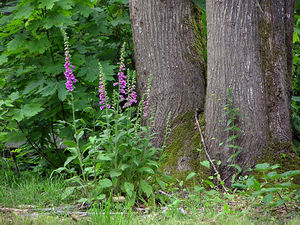 Before planting the bushes, the soil is dug up and enriched with manure or compost and mineral fertilizers. You can use "Nitrofoska" or add 1-2 glasses of wood ash to the holes.
Before planting the bushes, the soil is dug up and enriched with manure or compost and mineral fertilizers. You can use "Nitrofoska" or add 1-2 glasses of wood ash to the holes.
Caring for adult plants is simple. Watering is done only as needed, since the flower does not like excessive moisture... The soil around the bushes should be regularly weeded out and loosened from time to time. The foxglove roots are horizontal, so loosening is done very carefully.
Plant care includes feeding two or three times per season. Special mineral fertilizers are used for flowering flowers. Overfeeding foxglove is not recommended, otherwise you can get a lush plant without flowers. Faded and wilted flowers are removed from flowering bushes. In this case, flowering will last longer.Inflorescences that have already completely bloomed are cut off.
When caring for digitalis, it is recommended to look at the condition of the roots. By the end of summer, they can crawl out. In autumn, they must be sprinkled with a thick layer of soil., otherwise, in winter cold, the root system will freeze and the plant will die.
With proper care, seeds will ripen on the plant in the fall. In this case, the adult plant reproduces by self-seeding, which facilitates its reproduction.
Digitalis in landscape design
The plant looks great both in single and in group plantings. Different varieties can be planted on one flower bed, choosing them according to the color scheme... However, it should be borne in mind that insects will cross-pollinate, as a result of which the purity of the variety will be compromised.
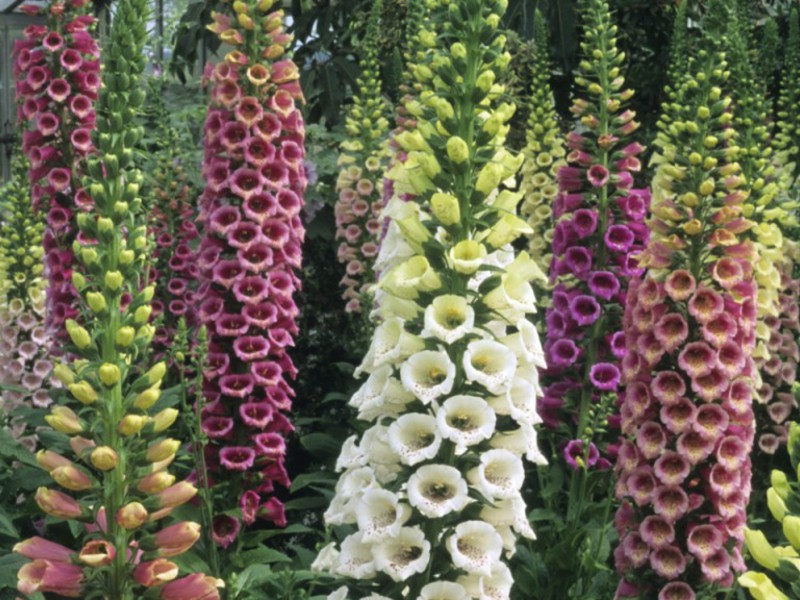
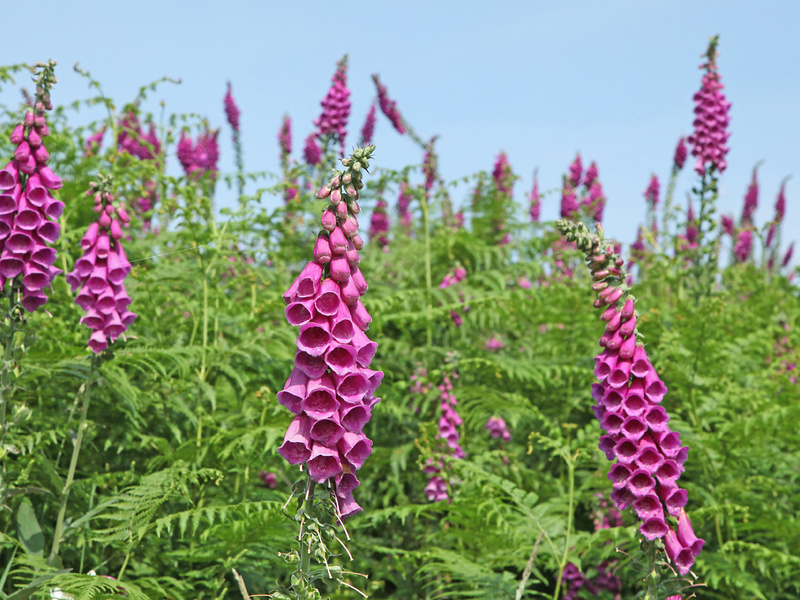
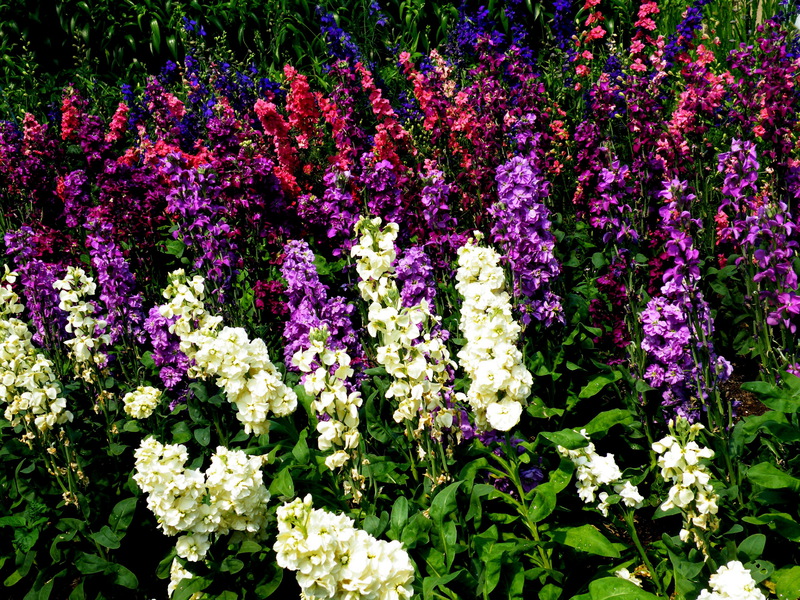

A flower garden of tall plants with digitalis, peonies, valerian, and roses planted in it looks beautiful. Bright tall candles can be used to create a backdrop for lower plants. The foxglove will look spectacular against the background of the building wall contrasting in color... It should be borne in mind that the plant is poisonous, so it cannot be planted in childcare facilities.
Even dwarf varieties are not suitable for decorating the border. But they can be grown in containers, decorating gazebos or verandas. Some varieties stand well in cut and are used for making bouquets.
Planting an unpretentious foxglove in the garden is an excellent alternative to flowering perennials that are demanding to care for. Once grown from seeds, a plant will decorate the site with its bright candlesticks for many years.


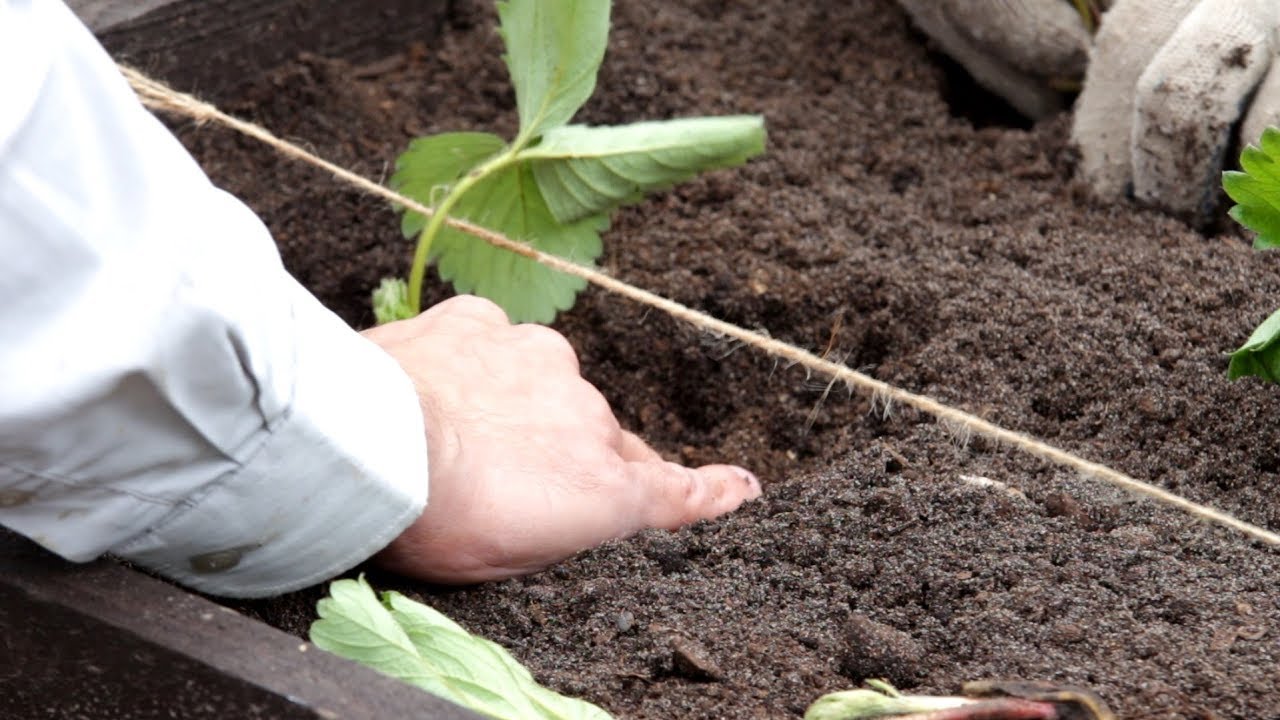
1 comment